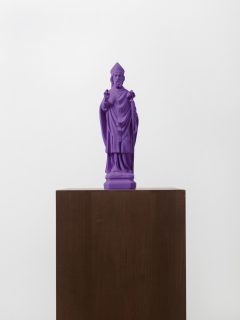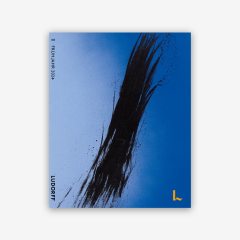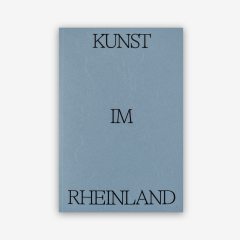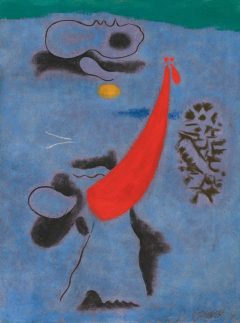Katharina Fritsch
Pudel
1995
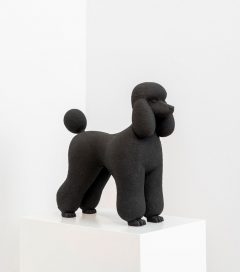
plaster, painted
40 × 43 × 17 cm / 15 3/4 × 16 15/16 × 6 11/16 in
Signed, dated and "52/64" numbered on the bottom der hinteren Pfoten
Edition of 64
Another copy of this edition is in the Walker Art Center, Minneapolis
Catalogue Raisonné by Liebermann 1996 no. 101
Price includes German VAT. Shipping costs are not included. All prices are subject to change and availability. Change region and currency
Private Collection Germany
- Galerie Ludorff, "Neuerwerbungen Frühjahr 2024", Düsseldorf 2023
- Galerie Ludorff, "Neuerwerbungen Frühjahr 2024", Düsseldorf 2024, S. 26
- Galerie Ludorff, "Kunst im Rheinland", Düsseldorf 2023, S. 114
- Walker Art Center, "Bits & Pieces Put Together to Present a Semblance of a Whole", Minneapolis 2005, S. 227 (anderes Exemplar)
- Valeria Liebermann, "Werkverzeichnis 1979-1996", in: San Francisco Museum of Modern Art/Museum für Gegenwartskunst Basel, "Katharina Fritsch", Ausst.-Kat., Köln 1996, Nr. 101
Katharina Fritsch's sculpture "Pudel" is a very typical example of the artist's working method, which explores everyday culture and the perception of objects and is interested in questioning the boundaries between reality and symbolism, form and content. For her works, Fritsch often chooses everyday objects that viewers immediately recognise. In this case, however, the focus is not on an object but on a living creature, the poodle.
By placing the poodle on a pedestal, she declares it a work of art. By using a single, monochrome colour, she emphasises the shape of the object and invites the viewer to take a closer look. Despite the great visual appeal of the all-pervasive sculpture, one quickly looks beyond the mere surface and engages with the symbolic depth of the sculpture. What might the poodle stand for in the eyes of the artist? What does it stand for in our eyes?
The poodle can be interpreted as a symbol of playfulness and grace, but also as a symbol of loyalty, as these dogs are very willing to learn and are focussed on their owner. It should also be mentioned that the Poodle's fur is special because it does not simply fall out, as is the case with most other dog breeds. Poodle hair grows like that of a sheep, which is why it has to be clipped. Over the course of time, clipping poodles has developed into a creative discipline in its own right - even an art form in the eyes of some. The typically mannered 'poodle cut' with alternating bald and bushy patches has become engraved in the collective memory.
However, Katharina Fritsch does not want to declare the shearing of poodles an art form. In her work, she very clearly limits herself to posing questions. She consciously leaves us without answers. The poodle is therefore to be understood more as a medium that evokes various associations and allows for interpretations. The sculpture can be interpreted as a commentary on everyday culture, but also on the relationship between humans and animals. Does it possibly even stand for a poetic reflection on loyalty, play and the transience of life? The intelligent animal could also be understood as a mediator between man and nature.
By choosing very everyday objects and using simple materials such as plastic or plaster, the connection to mass production and consumer society is obvious. From this perspective, Fritsch's art could quickly be categorised as Pop Art. However, her approach primarily reflects the great influence of conceptual art, which considers the context and the idea behind a work of art to be of equal value to the physical object. However, as already mentioned, the artist is not interested in emphasising a particular reading or communicating clear messages. Rather, the aim is to address the viewer directly with very accessible themes in order to sensitise them to the perception of the object and to engage with it and its meaning. By means of very subtle symbolism, Fritsch enables the viewer to have an experience that goes beyond the initial positive surprise of seeing the animal and engages with this very context. Through her questions, she refers to a dimension that goes beyond pure representation and perception. Is a certain visual experience necessary for categorisation? What significance does the viewer's understanding of art play in general?
To summarise, Katharina Fritsch's "Poodle" can certainly be classified as a masterpiece of contemporary sculpture. It is not without reason that she recently received the Biennale's grand prize for her life's work. Fritsch creates sculptures that are thought-provoking and allow for very poetic and multi-layered reflections that go far beyond the initial reaction to the supposedly everyday object. Her interest in this context, including the context of viewers far removed from art, expands the concept of art and the understanding of the perception of art.



